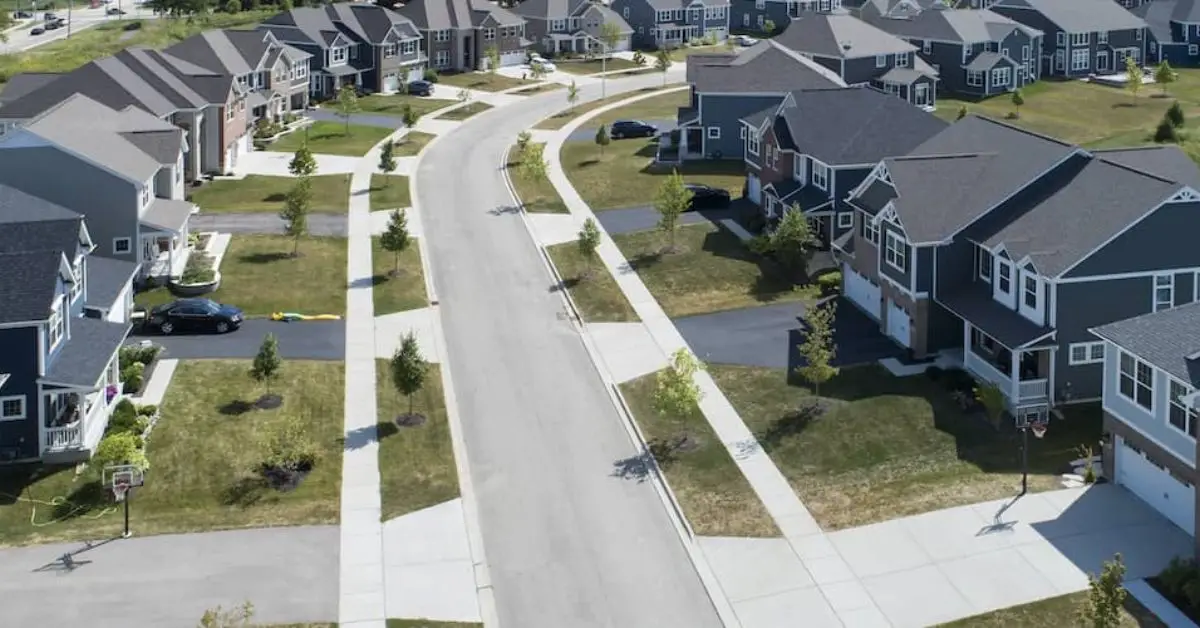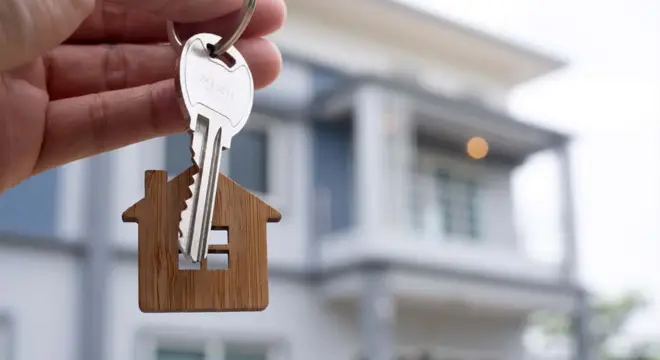7 Proven Signs Your Future Home Will Hold Its Value for Years
When you’re buying a home, it’s easy to get swept up in the charm of a sunny kitchen or a big backyard. I’ve been there — standing in a living room, imagining future dinners and family photos on the walls. But here’s the thing most buyers forget: a house isn’t just a place to live, it’s one of the biggest financial bets you’ll ever make.
And like any big investment, the question isn’t just “Do I like it now?” — it’s “Will it still hold its value when I decide to sell?” That’s where smart buyers have the edge. They know how to spot the quiet clues that a property will stand strong in the market, no matter what the economy does.
In this guide, I’m going to share the 7 signs I look for when helping clients pick a home that’s not just beautiful, but built to keep its worth. These aren’t fluffy “location, location, location” clichés — they’re backed by real market data, expert insights, and lessons learned from years of watching deals play out in the real world.
By the end, you’ll be able to walk into a property and know within minutes if it’s likely to protect your investment — or quietly drain it. So let’s start with the first sign…
Sign 1 – Location With Future-Proof Potential

You can change paint colors and flooring, but you can’t change where the home is. That’s why I always say location is your safety net. A great spot can protect your investment even in a slow market.
When I’m helping clients choose, I focus on these location markers:
- Good schools — Even if you don’t have kids, school districts influence buyer demand and resale value.
- Proximity to job hubs & public transit — Saves commute time, attracts working professionals.
- Upcoming infrastructure projects — New metro lines, highways, or business parks can increase demand over time.
- Low crime rate — A safer area is always in higher demand, which keeps prices steady.
It’s not just about the “now.” Ask yourself: Will this area still be attractive 10–15 years from today?
Look at the city’s development plans, neighborhood trends, and how locals feel about future changes. Walkability is a huge plus too. According to the National Association of REALTORS®, 79% of buyers rate walkability as important, and 78% say they’d pay more for it. That’s a clear signal that a connected, livable area holds long-term value.
Even if the house ages, the land and location often gain value. A future-proof location is like buying insurance for your property’s worth.
Sign 2 – Historical Price Trends & Comparable Sales (Comps)
Buying a home without checking its price history is like investing in a company without looking at its past performance. The numbers tell you a story — you just need to read it.
Here’s how I approach it:
- Look back 5–10 years in local property records or real estate sites.
- Check if prices show steady growth instead of random spikes or sudden drops.
- Compare your target home with recently sold properties (comps) of similar size, age, and features in the same area.
- Notice how quickly those homes sold and whether they went for asking price or more.
Why avoid short-term price jumps? Because they’re often tied to temporary hype — a steady climb is a much stronger signal of market stability.
A personal tip: If comps show that similar homes sell quickly at solid prices, it means buyers value that area. If they linger unsold or need price cuts, think twice.
Sign 3 – Walkability & Neighborhood Vitality

A home’s value isn’t just in its walls—it’s also in the energy of the community around it. That’s the power of walkability.
When I evaluate a neighborhood, here’s what I check:
- Nearby amenities: Grocery stores, cafés, gyms, and pharmacies you can reach without driving.
- Green spaces: Parks or tree-lined walking paths that invite people out of their cars.
- Active local community: Farmers markets, block parties, or local meet-ups that show the neighborhood is alive.
- Transit access: Easy access to buses, train stations, or bike docks adds convenience and value.
Walkable neighborhoods don’t just feel good—they command a premium. According to a City Observatory study on the economic value of walkability, every additional point in Walk Score can add roughly $3,000 to a home’s market value.
And here’s a spot-on comment from Reddit:
“Higher rent/home prices are just a sign that walkability increases the desirability and economic value of a location.”
When a city plans new developments—like bike lanes, pocket parks, or a transit station—those areas often become demand hotspots a few years later.
Sign 4 – Strong Condition & Minimal Deferred Maintenance
A beautiful home loses its shine fast if the basics are falling apart. That’s why I stress the importance of checking a home’s overall condition before making any commitment.
Here’s my quick checklist before even thinking about an offer:
- Structural health: Any wall or foundation cracks? Watch closely.
- Roofing: Missing shingles, signs of sagging, or past leaks are red flags.
- Plumbing & Electrical: Old, inconsistent wiring or plumbing can be costly—and sometimes dangerous.
- Major systems: HVAC, water heater, insulation—are they modern or on their last legs?
And don’t underestimate the power of first impressions — these 5 curb appeal tricks every smart seller uses can instantly make a property look better maintained and more valuable.
Watch out for warning signs:
- Peeling paint, warped floors, musty odors—these often hide water or mold issues. Sometimes, it’s not major repairs but small neglects that hurt value — here are 4 simple signs your house exterior needs cleaning before they turn into bigger problems.
- Old knob-and-tube wiring or DIY electrical fixes—avoid these unless you’re budgeting big.
Deferred maintenance kills value. Properties that show neglect often:
- Sit on the market longer
- Lead to aggressive price negotiations
- End up selling at a discount—or not at all
The consequences of deferred maintenance can be brutal for sellers, and as a buyer, you can use that knowledge to protect yourself.
Sign 5 – Flexible, Functional Layout With Broad Appeal

When I walk into a home, I picture different types of people living there—families, couples, roommates, even solo remote workers. If the layout works for all of them, that’s a strong sign of lasting value.
What to look for:
- Open but practical flow — spaces that feel connected yet purposeful.
- Multi-use rooms — a dining room that could be an office, or a den that could be a guest room.
- Good bedroom-to-bathroom ratio — avoids bottlenecks in daily life.
- Natural light — makes spaces feel larger and more inviting.
What to avoid:
- Over-personalized changes — like oddly shaped rooms or built-in fixtures that limit use.
- Awkward layouts — kitchens far from dining areas, bedrooms next to noisy living spaces.
A well-planned layout quietly works in the background, making daily life easier and appealing to the next buyer without needing major changes.
Sign 6 – Energy Efficiency & Seasonal Features
Energy efficiency isn’t just a nice-to-have anymore — it’s a selling point buyers actively look for. Homes that keep utility bills low feel more comfortable to live in and easier to maintain.
Top efficiency features to check:
- Solar panels — long-term savings and eco appeal.
- Quality insulation — keeps the home warm in winter and cool in summer.
- Modern HVAC systems — efficient heating and cooling reduce bills.
- Energy Star appliances — fridges, washers, and dishwashers that use less power and water.
Seasonal “wow” factors:
- A sunny garden for spring blooms.
- A cozy fireplace for winter nights.
- A pool or shaded patio for summer relaxation.
A home that’s easy on bills and offers small seasonal joys tends to stay loved for years — and loved homes usually hold their value better. If you want to take this a step further, check out these 3 smart energy upgrades that boost your home’s resale value for practical ideas you can start using right away.
Sign 7 – Clean Legal & Zoning Status

A house can look perfect on the outside, but if the paperwork isn’t clean, the resale process can turn into a nightmare. Before you fall in love with a property, verify every legal detail.
What to review:
- Title check — no disputes, liens, or pending claims.
- Zoning compliance — property use matches city regulations.
- HOA rules & fees — if there’s a homeowners association, make sure its guidelines and charges are transparent.
- Valid permits — for all renovations, extensions, or major repairs.
What to avoid:
- Homes with unpermitted additions or basement conversions — they can lower value and even block a future sale.
Clear, well-documented ownership means fewer headaches now and zero nasty surprises when you decide to sell.
Bonus Sign – Land Appreciation vs. Structure Depreciation
Here’s a truth real estate investors live by: buildings age, but land holds power. Even if a house itself loses value due to wear and tear, the land it sits on can gain value — especially in a desirable location.
Why this happens:
- Scarcity factor — there’s only so much land in prime city zones.
- Redevelopment potential — older homes are often bought for the lot, not the structure.
- Urban growth — as cities expand, land near the center becomes more sought-after.
Example: An older, modest home in a central neighborhood may sell for a surprisingly high price because the land alone is worth it.
When buying, keep one eye on the building and the other on the dirt underneath — that’s where long-term value often hides.
Final Thoughts
Buying a home is one of the biggest financial moves you’ll ever make, and its future value isn’t just decided by luck — it’s decided by the signs you choose to notice today.
If you focus on location, long-term trends, community vitality, upkeep, versatility, efficiency, and clean legal standing, you’re not just buying a house — you’re securing a smart, lasting investment.
Even if styles change and walls age, a home with the right fundamentals will always find buyers ready to pay its worth. That’s the difference between a property that’s “nice right now” and one that stands strong for decades.
Your turn: When you look at a home, what’s the very first sign that tells you it’s a keeper? Drop your tip in the comments — you might save someone from making a bad call.
Want more expert insights? Visit Build Like New for practical guides, checklists, and strategies to help you buy, upgrade, and protect your home’s value.
Disclaimer: This article is for informational purposes only and does not constitute financial, legal, or real estate advice. Always consult with a licensed real estate agent, financial advisor, or legal professional before making property purchase decisions. Market conditions can change, and individual circumstances may vary.


